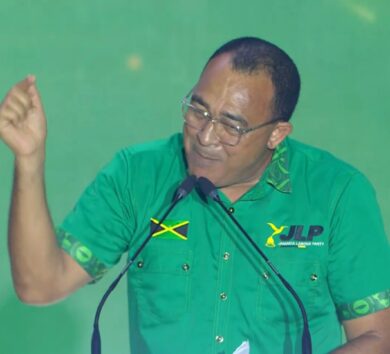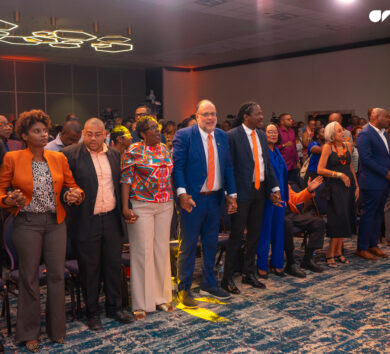

Today, it sketches a far more concrete arc marked by shipping lanes, megaports and logistics corridors linking China and Latin America across the Pacific.
This transformation has gathered pace over the past decade, thanks in large part to the China-CELAC (Community of Latin American and Caribbean States) Forum, a cooperative mechanism launched under the aegis of Chinese President Xi Jinping. What Xi once described as “a young seedling” has since taken firm root.
Ten years on, this mechanism has matured into a key platform for South-South collaboration that has drawn China and Latin America and the Caribbean (LAC) into a closer partnership across political, economic, cultural and other domains.
The forum’s fourth ministerial meeting is set to take place on Tuesday in Beijing. Xi will address its opening ceremony and unveil new initiatives and measures to promote closer ties.
Qiu Xiaoqi, the Chinese government’s special representative for Latin American affairs, said the upcoming meeting is expected to deliver a message of peace, development and cooperation amid global turbulence, charting a new chapter in China-LAC relations.
TOP-LEVEL DESIGN
China and countries in Latin America and the Caribbean are fellow developing nations that hold common political aspirations, face similar development tasks, and can benefit from complementary economic strengths.
Spanning one-fifth of the world’s land area and accounting for a quarter of the global population and economy, China and the LAC combined represent one of the most dynamic and promising regions on the planet.
“Our shared aspiration for independence, development and rejuvenation has brought us closer together,” Xi said. Since the turn of the century, ties between the two sides have grown rapidly. Both sides realized they needed something more than the traditional one-on-one tango — a broader framework for cooperation.
During the CELAC summit in Cuba in early 2014, Latin American and Caribbean leaders expressed support for such a framework. Xi welcomed the move, saying that “the time is ripe.” In July 2014, Xi flew half the globe for his second visit to the region as head of state. He was heading for a BRICS summit in Brazil, state visits to some countries in the region, and a historic moment — the first meeting between leaders of China and Latin America and the Caribbean.
In the Brazilian capital Brasilia, the leaders announced the establishment of the China-CELAC Forum, an institutional framework to advance the vision of building a China-LAC community with a shared future.
At the meeting, Xi laid out the guiding principles for this comprehensive cooperative partnership — equality, mutual benefit and common development. Backing his proposal was a roadmap driven by trade, investment and finance.
Six months later, the inaugural ministerial meeting of the forum was held in Beijing, turning the vision of an overall cooperation platform covering China and all 33 countries in Latin America and the Caribbean into reality.
Observers said this marked a new phase of China-LAC ties, where China’s cooperation with the region as a whole complements and strengthens its bilateral relations with individual regional countries.
Xi proposed principles for the forum’s growth — equal partnership, shared wins, flexibility and pragmatism, and openness and inclusivity.
Comparing it to a seedling just breaking through the soil, he said that “the forum needs the dedication and cultivation of both sides for it to grow bigger and stronger.”
In the decade that has followed, Xi has provided consistent support to nurture this forum. At each of the three previous ministerial meetings, he offered clear guidance that helped shape the forum’s development at key moments in its evolution.
Under the guidance of Xi and his Latin American and Caribbean counterparts, the forum now hosts a constellation of institutional interactions such as ministerial meetings, dialogues among foreign ministers, coordinators’ meetings, and a growing number of specialised sub-forums ranging from digital technology to poverty reduction.
Chai Yu, director of the Institute of Latin American Studies at the Chinese Academy of Social Sciences, said Xi has led by example in advancing the forum’s development, which is key to deepening political trust and building consensus on cooperation.
COMMON DEVELOPMENT
Chancay, a modest city on the Peruvian coast, has been transformed into a megaport equipped with towering cranes and unmanned trucks. Last November, Xi and his Peruvian counterpart Dina Boluarte inaugurated the port via video link from the capital Lima, marking the launch of South America’s first smart port.
Built in just three years through Chinese-Peruvian collaboration, the port shortens the shipping time across the Pacific by nearly one-third, reduces logistics costs by 20 per cent, and is expected to create over 8,000 direct jobs.
Boluarte lauded the project as a bold stride toward “deeper integration and shared prosperity with China” and “a gateway opening Latin America to the vibrant promise of the Asia-Pacific.”
Chancay’s story is the latest episode in the booming cooperation under the China-CELAC Forum. Across the region, more than 200 Chinese infrastructure projects have been launched — generating over 1 million jobs.
In Brazil, an ultra-high-voltage transmission project has overcome challenges in delivering clean hydropower over vast distances from the Amazon. In Jamaica, a Chinese-built highway has cut cross-island travel time by more than half, while in Bolivia, satellite collaboration has enabled free television access for half a million households. Numbers tell a compelling story. Trade between China and the region reached 518.4 billion U.S. dollars in 2024, doubling the figure recorded a decade ago. By 2023, Chinese investment in the region had exceeded 600 billion dollars. These figures have exceeded the goals announced by Xi when he and Latin American and Caribbean leaders met in 2014 to plan for closer cooperation.
As the second-largest trading partner of Latin America and the Caribbean, China now has more free trade agreements in the region than anywhere outside Asia. One such deal with Chile has turned premium cherries into a symbol of thriving cross-Pacific commerce. In 2024, Chile’s cherry exports surged 51.4 per cent to 3.57 billion dollars, with over 90 per cent going to China.
“The Chinese market has created a positive ripple effect in Chile, generating jobs across the supply chain, from harvesting to packaging,” said Hernan Garces Gazmuri, a Chilean cherry producer who moved his family to Shanghai for greater business opportunities.
As Pavel Aleman, a Cuban scholar from the University of Havana, pointed out, China-LAC cooperation is mutually beneficial in essence, with China’s economic vitality fuelling Latin America’s development, while the region plays a vital role in supporting China’s continued growth. “Deeper cooperation between the two sides can help offset the impact of tariff barriers and effectively counter global risks,” he said.
Xi’s signature Belt and Road Initiative (BRI) has brought China into closer partnership with countries across the vast Pacific. To date, more than 20 countries in the region have joined the Belt and Road cooperation framework, and 10 countries have signed cooperation plans with China under the initiative.
Xi once described Latin America as a natural extension of the 21st Century Maritime Silk Road—an essential pillar of the BRI. He emphasised China’s commitment to strengthening cooperation with the region, aligning development strategies and promoting shared growth.
“As we roll out the blueprint for the BRI, we strive to forge a route of cooperation across the Pacific, in order to draw closer the two lands of abundance of China and Latin America and the Caribbean,” Xi said in his congratulatory message to the second ministerial meeting of the China-CELAC Forum.
Beyond trade and investment, collaboration between China and this region has also deepened in the fields of science, technology and environmental protection. China has supported joint Earth-resource satellite programs with Brazil, contributing to efforts aimed at curbing deforestation and preserving biodiversity in the Amazon.
Xi said China and Latin America and the Caribbean should promote joint development to contribute to strong, sustainable, balanced and inclusive growth of the global economy.
HEART-TO-HEART CONNECTIONS
Xi has long believed that strong state-to-state relations are built on people-to-people connections. Over his six trips to the region as head of state, he made a point of engaging with everyday people despite tight schedules.
In Costa Rica, Xi visited the home of a coffee grower who showed him around his house and plantation. Over a cup of coffee, Xi chatted with the family and shared that he, too, had rural beginnings, having spent years working the land in his youth.
His engagement has ignited vibrant people-to-people exchanges, with cultural festivals, youth projects and journalist initiatives flourishing under the China-CELAC Forum.
To date, China has provided the region with 17,000 government scholarships and 13,000 training opportunities. It has signed 26 educational cooperation agreements or memoranda of understanding with 19 countries and established 68 Confucius Institutes or Confucius Classrooms in the region.
Connections between China and the region have also been strengthened through practical measures, such as the launch of new direct air routes and the inclusion of more Latin American countries in China’s 240-hour visa-free transit program.
As many countries in the region now officially celebrate the Chinese New Year, a growing number of Chinese travellers have headed to Latin America in recent years—some for business, others as tourists drawn by the region’s stunning landscapes and rich cultural diversity. These efforts have brought China and the region closer than ever, said Qiu, the Chinese government’s special representative for Latin American affairs.
Both China and Latin America are home to ancient histories and flourishing civilisations. For Xi, civilisations grow richer and more colourful through exchanges and mutual learning. In 2013, at Mexico’s Chichen Itza, Xi explored ancient Maya ruins with archaeologist Jose Huchim Herrera. Amid stepped pyramids and temples, he inquired about the features of the ruins, such as the meaning of carved reliefs.
His questions revealed a deep curiosity about the host civilisation, said Huchim Herrera.
In a signed article published last November ahead of his visit to Peru, Xi highlighted a cultural connection by pointing out the resemblance between the Incan gold masks unearthed in Peru and those discovered at the Sanxingdui archaeological site in southwest China’s Sichuan Province.
That same month, a joint exhibition in the ancient city of Cusco showcased dazzling gold artefacts, bronze statues, jade treasures and wooden relics from Sichuan’s Sanxingdui and Jinsha sites, captivating nearly 10,000 Peruvian visitors.
Daniel Grimaldi, executive director of the think tank Chile 21, praised exchanges between Chinese and Latin American civilisations for opening new channels of communication. Such interactions, he said, strengthen ties through mutual respect and open dialogue, while supporting both sides on their shared journey toward modernisation.
As Xi has said, in a globalisation and information age, the Pacific is no barrier but rather a bond and a bridge.







Comments